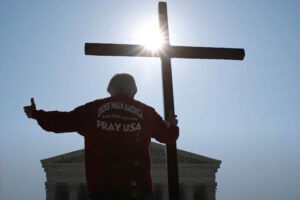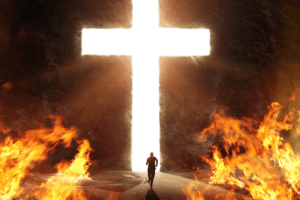The church was dying and didn’t know it. Attendance was down, the building was mostly empty and the glory days had long since passed.
As a last resort, a church member asked LifeWay Christian Resources president and CEO Thom S. Rainer for some advice. Rainer spent a few weeks studying the church, then recommended a number of changes.
But church leaders rejected them.
As he walked out the door, Rainer knew it was simply a matter of time before the church died. Afterwards, he and a friend performed a kind of autopsy on the church—reviewing its last few years to find out how things went wrong.
Lessons from that church autopsy—along with about a dozen others—are included in Rainer’s latest book, Autopsy of a Deceased Church, out this month from Nashville-based B&H Publishing.
It’s meant for ailing and healthy churches alike, Rainer said.
“Even healthy churches need to learn from autopsies,” he said, “because they can tell us paths of prevention.”
Rainer found 10 factors—from slow erosion of the congregation and too many short-term pastors to a lack of prayer and neglected facilities—that cause churches to decline and die.
A number of the now-dead churches spent too much time thinking about the past, Rainer said, in a chapter called “The Past is the Hero.” Remembering the past with fondness is fine for a church, said Rainer, “but if it hinders us from looking forward, that is a problem.”
Most of the deceased churches Rainer studied had once been thriving and then went through a period of slow decline. In some cases, demographics played a role in the decline. About a third of the dead churches Rainer studied had been in urban areas, where the ethnic mix of the community changed, but the church did not. Instead of reaching their new neighbors, many withdrew and became commuter congregations, with no neighborhood ties.
“The common theme among those congregations was an unwillingness to connect with the transitioning community,” he said. “Instead the churches became a white island in a sea of diverse people.”
Some of the now dead churches were in small towns where the population was shrinking. But more than a few were in thriving communities but still failed to reach their neighbors. All became increasingly insular as they declined.
Surprisingly, most of the churches still had money in the bank when they closed.
“You don’t have to be broke to be dying,” Rainer said.
But those churches spent most of their money on programs that benefited church members, rather than on mission or outreach. They developed a me-first mentality, Rainer explained, and had little connection to the community around the church. That kind of inward focus can be deadly for a church.
“Though it’s difficult to isolate any one factor as the most dangerous,” Rainer said, “the steep numerical decline of these churches was most noticeable as the congregation started focusing on their own needs. They became preference-driven instead of Great Commission-driven.”
The book is relatively short—about 100 pages divided into 14 chapters, one on each risk factor plus three chapters of recommendations for how churches can respond.
Much like Rainer’s previous book, I Am A Church Member, currently No. 2 on the CBA’s best-seller list, Autopsy of a Deceased Church is designed for group study. Each chapter ends with a series of discussion questions and a prayer challenge.
Rainer hopes church leaders and members will read the book and learn from the mistakes other congregations made. They may also have to face their own problems head on, he said, but that’s better than ignoring the signs of decline and hoping they’ll go away.
“The trauma of observing an autopsy is only beneficial if it is received as a warning to the living,” he writes. That’s a reality Rainer knows all too well.
The book was inspired in part by the childhood death of his sister, Amy. Rainer’s father insisted her doctor perform an autopsy, so the cause of death would be clear. He wanted to know if her health problems might affect the rest of the family. The autopsy revealed a weakness in Amy’s heart, which proved a warning sign to other family members.
“We all get checked out for our heart problems, because Dad had the courage to ask for an autopsy,” Rainer said.
He hopes churches will have the courage to do likewise. That often starts with prayer and a willingness to love your church enough to point out its flaws and face its challenges.
“I do love the fact that so many people love their churches,” he said. “But we can’t love them to death.”
See an error in this article?
To contact us or to submit an article






















